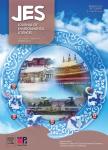Characterization of arsenate transformation and identification of arsenate reductase in a green alga Chlamydomonas reinhardtii
Characterization of arsenate transformation and identification of arsenate reductase in a green alga Chlamydomonas reinhardtii作者机构:Key Laboratory of Urban Environment and Health Institute of Urban Environment Chinese Academy of Sciences Xiamen 361021 China State Key Laboratory of Urban and Regional Ecology Research Center for Eco-environmental Sciences Chinese Academy of Sciences Beijing 100085 China Shandong Analysis and Test Center Shandong Academy of Sciences Shandong 250014 China
出 版 物:《Journal of Environmental Sciences》 (环境科学学报(英文版))
年 卷 期:2011年第23卷第7期
页 面:1186-1193页
核心收录:
学科分类:0710[理学-生物学] 071001[理学-植物学] 0832[工学-食品科学与工程(可授工学、农学学位)] 07[理学] 08[工学] 083202[工学-粮食、油脂及植物蛋白工程]
基 金:supported by the National Natural Sci- ence Foundation of China (No. 40973058, 21077100) the Doctor Foundation of Shandong Province (No. BS2009HZ024)
主 题:arsenate accumulation reduction efflux arsenate reductase Chlamydomonas reinhardtii
摘 要:Arsenic (As) is a pervasive and ubiquitous environmental toxin that has created catastrophic human health problems world-wide. Chlamydomonas reinhardtii is a unicellular green alga, which exists ubiquitously in freshwater aquatic systems. Arsenic metabolism processes of this alga through arsenate reduction and sequent store and efflux were investigated. When supplied with 10 μmol/L arsenate, arsenic speciation analysis showed that arsenite concentration increased from 5.7 to 15.7 mg/kg dry weight during a 7-day period, accounting for 18%–24% of the total As in alga. When treated with different levels of arsenate (10, 20, 30, 40, 50 μmol/L) for 7 days, the arsenite concentration increased with increasing external arsenate concentrations, the proportion of arsenite was up to 23%–28% of the total As in alga. In efflux experiments, both arsenate and arsenite could be found in the efflux solutions. Additionally, the efflux of arsenate was more than that of arsenite. Furthermore, two arsenate reductase genes of C. reinhardtii (CrACR2s) were cloned and expressed in Escherichia coli strain WC3110 (?arsC) for the first time. The abilities of both CrACR2s genes to complement the arsenate- sensitive strain were examined. CrACR2.1 restored arsenate resistance at 0.8 mmol/L. However, CrACR2.2 showed much less ability to complement. The gene products were demonstrated to reduce arsenate to arsenite in vivo. In agreement with the complementation results, CrACR2.1 showed higher reduction ability than CrACR2.2, when treated with 0.4 mmol/L arsenate for 16 hr incubation.



